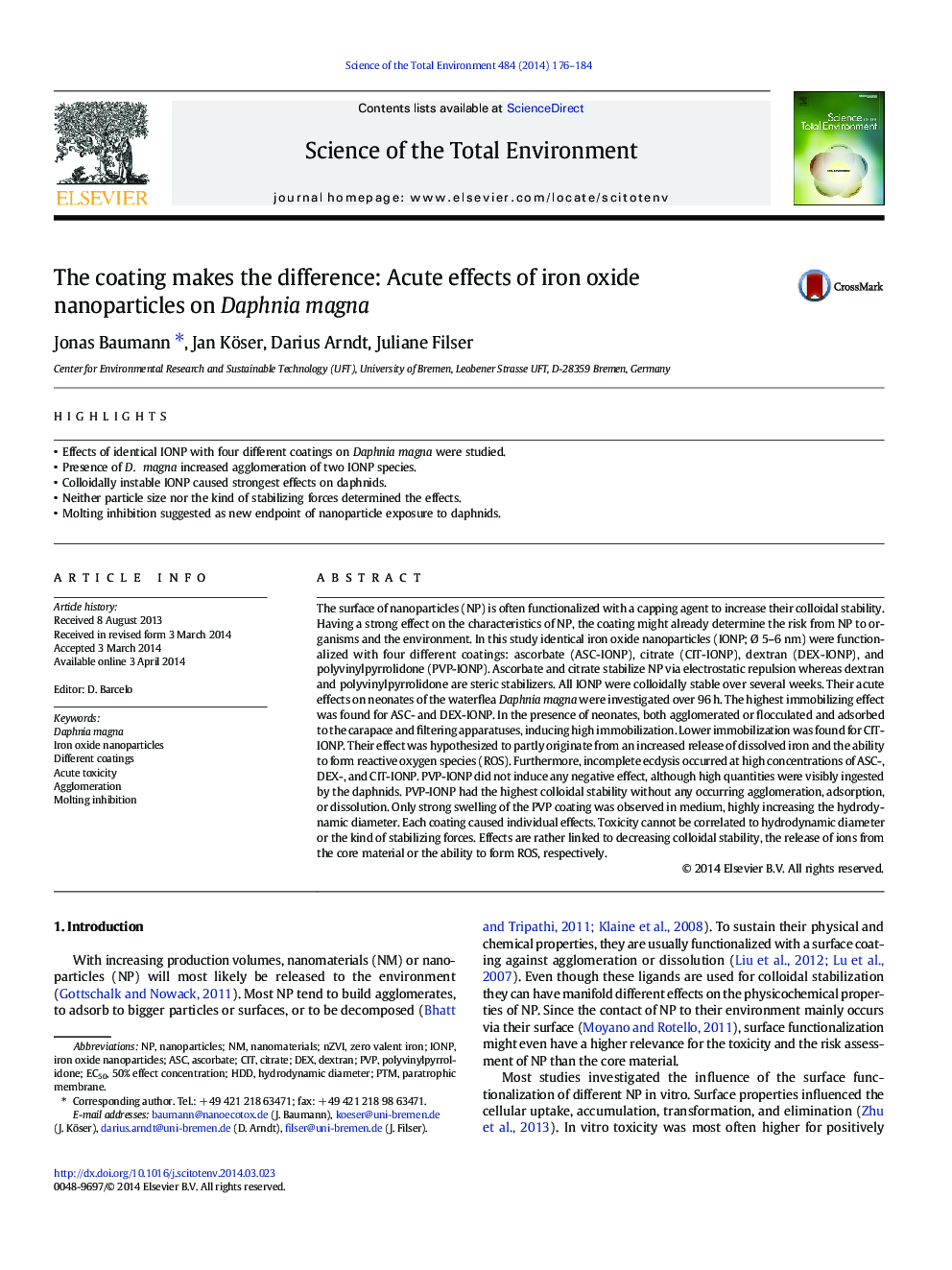| کد مقاله | کد نشریه | سال انتشار | مقاله انگلیسی | نسخه تمام متن |
|---|---|---|---|---|
| 6330617 | 1619784 | 2014 | 9 صفحه PDF | دانلود رایگان |

- Effects of identical IONP with four different coatings on Daphnia magna were studied.
- Presence of D. magna increased agglomeration of two IONP species.
- Colloidally instable IONP caused strongest effects on daphnids.
- Neither particle size nor the kind of stabilizing forces determined the effects.
- Molting inhibition suggested as new endpoint of nanoparticle exposure to daphnids.
The surface of nanoparticles (NP) is often functionalized with a capping agent to increase their colloidal stability. Having a strong effect on the characteristics of NP, the coating might already determine the risk from NP to organisms and the environment. In this study identical iron oxide nanoparticles (IONP; Ã 5-6Â nm) were functionalized with four different coatings: ascorbate (ASC-IONP), citrate (CIT-IONP), dextran (DEX-IONP), and polyvinylpyrrolidone (PVP-IONP). Ascorbate and citrate stabilize NP via electrostatic repulsion whereas dextran and polyvinylpyrrolidone are steric stabilizers. All IONP were colloidally stable over several weeks. Their acute effects on neonates of the waterflea Daphnia magna were investigated over 96Â h. The highest immobilizing effect was found for ASC- and DEX-IONP. In the presence of neonates, both agglomerated or flocculated and adsorbed to the carapace and filtering apparatuses, inducing high immobilization. Lower immobilization was found for CIT-IONP. Their effect was hypothesized to partly originate from an increased release of dissolved iron and the ability to form reactive oxygen species (ROS). Furthermore, incomplete ecdysis occurred at high concentrations of ASC-, DEX-, and CIT-IONP. PVP-IONP did not induce any negative effect, although high quantities were visibly ingested by the daphnids. PVP-IONP had the highest colloidal stability without any occurring agglomeration, adsorption, or dissolution. Only strong swelling of the PVP coating was observed in medium, highly increasing the hydrodynamic diameter. Each coating caused individual effects. Toxicity cannot be correlated to hydrodynamic diameter or the kind of stabilizing forces. Effects are rather linked to decreasing colloidal stability, the release of ions from the core material or the ability to form ROS, respectively.
Journal: Science of The Total Environment - Volume 484, 15 June 2014, Pages 176-184